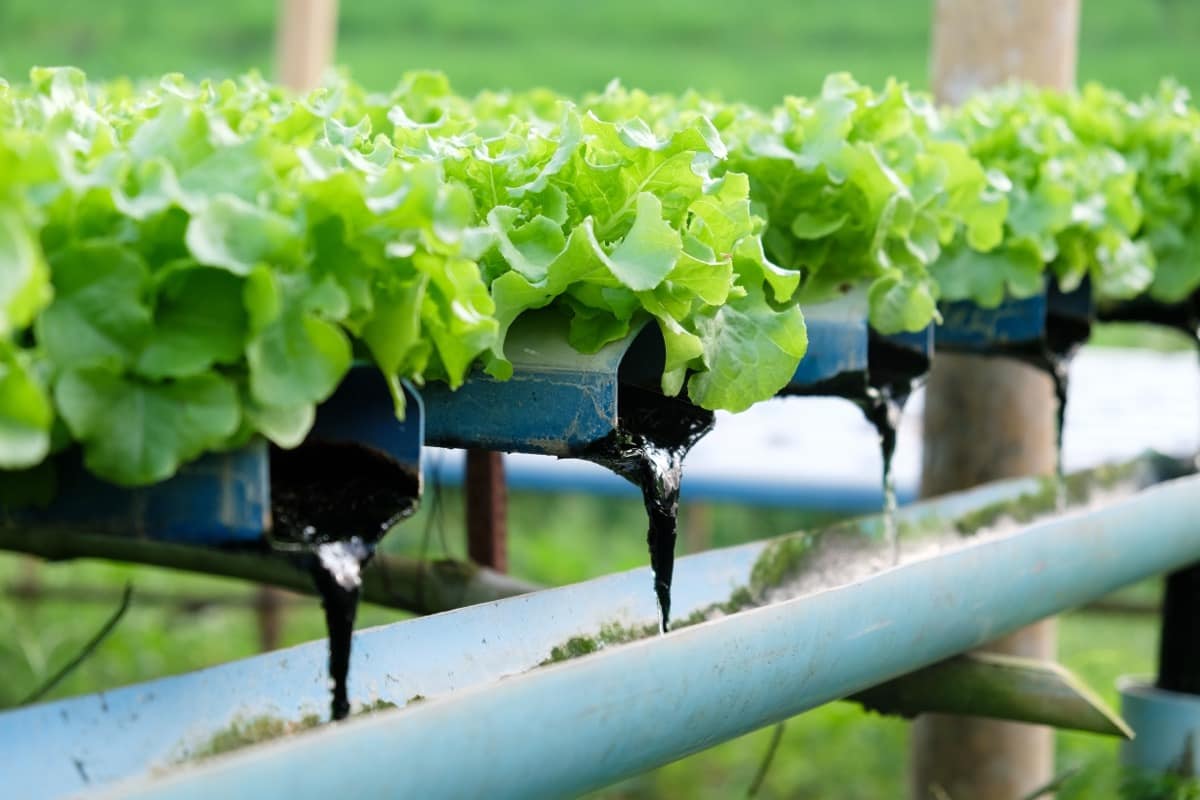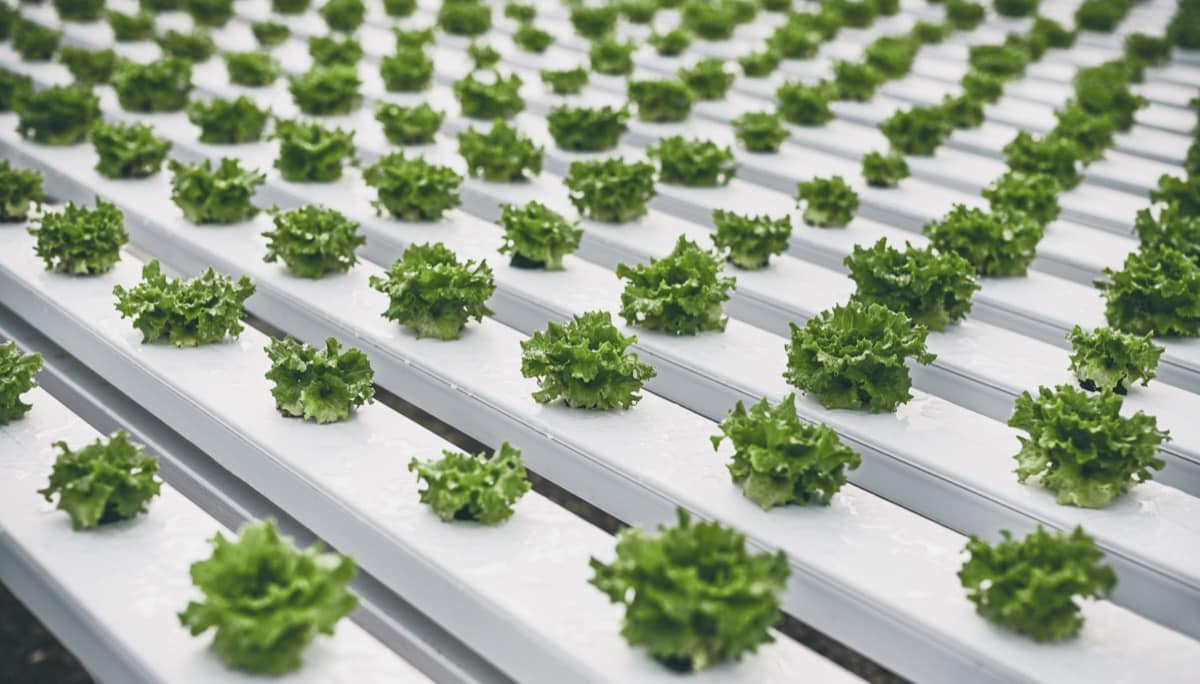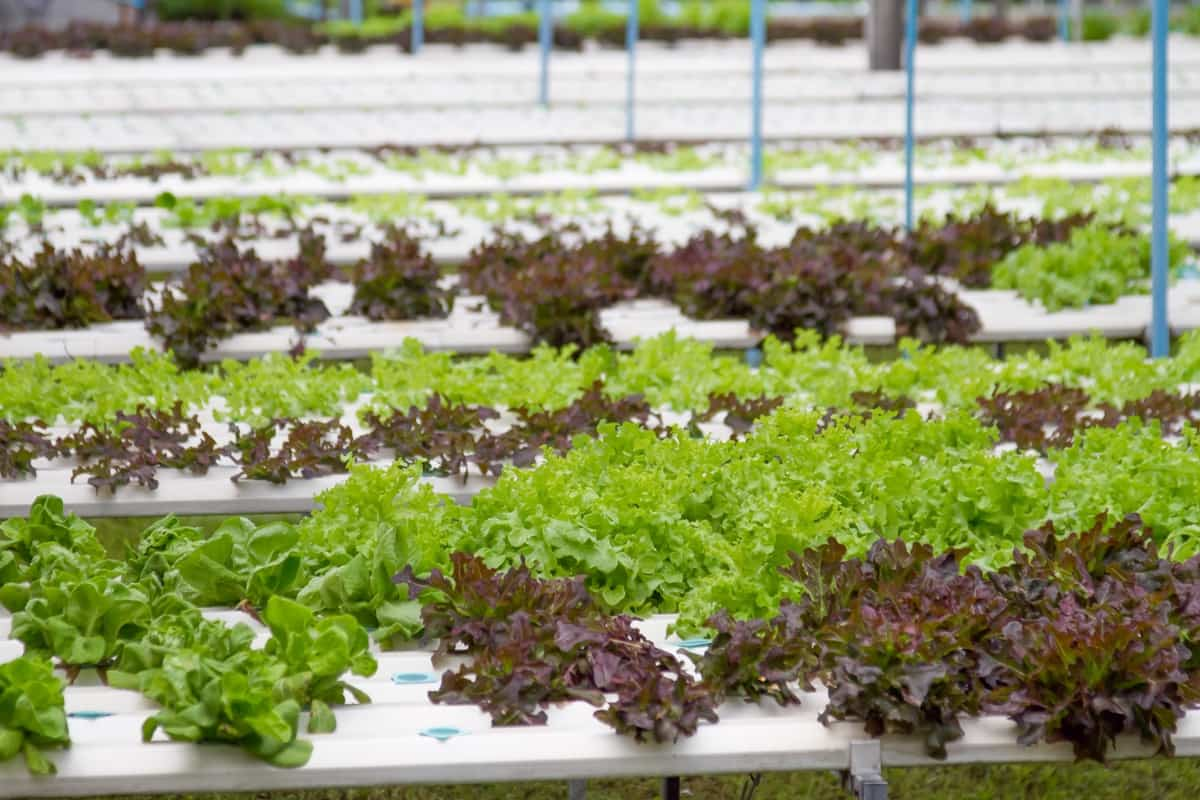Wick hydroponic systems have gained attention as a practical approach to soil-less gardening. These systems use a wick mechanism to supply nutrients and water to plants directly. Let’s delve into the pros and cons of this method. Unveiling the advantages, we’ll explore efficient resource use and low complexity. On the flip side, potential limitations include slower growth rates and susceptibility to clogs. Get ready to unravel the intricacies of wick hydroponics!

Introduction to Wick Hydroponics
Wick Hydroponic Systems represent a basic yet user-friendly approach to soil-less plant cultivation. Designed with simplicity, they suit beginners and those keen on grasping hydroponic basics. In these setups, plants receive water and nutrients through a passive wick mechanism, eliminating the need for intricate machinery. While easy to maintain and cost-effective, wick systems might be less efficient than more complex alternatives. They work best with fast-growing plants like lettuces and herbs that require moderate water.
The foundation of a Wick System lies in its simplicity, requiring only a reservoir, pot, growing medium, nutrient solution, and absorbent wicking material like cloth or rope. These systems operate through capillary action, a phenomenon seen in everyday instances, such as clothes wicking away sweat or paper towels soaking up spills. Similarly, plants utilize capillary action as their roots absorb moisture from the growing medium. This process occurs due to water’s adhesive nature, causing it to adhere to thin tubes or porous materials.
Elements of Wick Hydroponic Systems
Grow Tray: tray in a Wick System stands out for its departure from conventional hydro setups by not using net pots. Instead, the tray is filled with a growing medium and directly transplanted seedlings. Optimal growing media, such as vermiculite, perlite, or soilless mixes, harness capillary action effectively while preventing excessive drainage and maintaining a balance between moisture and aeration.
The Reservoir: Analogous to other systems, the reservoir stores nutrient-rich water underneath the grow tray, supplying plants with essential sustenance. Regular replenishment is necessary as nutrient potency diminishes with plant absorption.
The Aeration System: Typically consisting of an air stone and pump, the aeration system infuses oxygen into the water. Like its aquarium counterparts, the stone releases bubbles via an external air pump. Oxygenation of roots is vital for plant health, especially in Wick setups where roots remain consistently moist.
The Wicks: Connecting the reservoir to the grow tray, wicks utilize capillary action to deliver nutrients to the plant roots. While cotton ropes are simple, nylon ropes offer durability without mold concerns. The number of wicks, determined by system size and plant type, dictates nutrient transport efficiency.
In case you missed it: Different Types of Growing Mediums for DWC: Deep Water Culture Hydroponics

Creating a Wick System: Effortless Hydroponic Setup
- Prepare Wicking Material: Cut six to eight sections of wicking cord, each measuring 15 to 20 inches long. Common choices include nylon or wool rope, braided polyurethane yarn, propylene strips, mop head strings, and strips from old clothes or blankets.
- Drill Wicking Holes: Drill holes at the bottom of the top tote (growing area tote) to match the diameter of the wicking cord. These holes enable capillary action and even moisture distribution across the growing area.
- Create Drainage Holes: Drill multiple holes around the bottom of the growing area tote to facilitate excess moisture drainage back into the reservoir.
- Thread Wicks: Pass the wicking cords through the drilled holes, ensuring they hang low enough to reach the bottom of the reservoir tote.
- Adjust Tote Lids: Remove the inner sections of the tote lids to prevent the top tote from sliding into the bottom tote.
- Position Wicks: Allow the wicks to drape over the top bucket’s lip, securing them with the cutout lid. This prevents wicks from getting covered while filling the bucket with media.
- Add Filter Layer: Place expanded clay pebbles or river rocks at the bottom of the growing area tote to prevent perlite and vermiculite from entering the reservoir.
- Prepare Media: Thoroughly rinse to remove dust by creating a 60/40 mix of perlite (60%) and vermiculite (40%).
- Integrate Media: Add the perlite/vermiculite mix to the top tote, ensuring wicks stay in place to prevent media displacement.
- Optional Aeration: If using an aerator, drill holes on side of the bottom hole about 2 inches below the handhold. Maintain consistent air line length for uniform pressure.
- Prepare Reservoir: Pour 2 to 3 gallons of water into the nutrient reservoir (bottom tote). Mix plant-specific nutrients and adjust pH as necessary. Test the aerator’s functionality if applicable.
Pros of Wick Hydroponic Systems
Ease of Setup: Ideal for newcomers and those venturing into hydroponics, the wick system’s installation is a breeze. Its straightforward design demands minimal equipment and swiftly translates into a functional setup, granting immediate access to soil-less gardening.
Low Maintenance: Distinct in its passive nature, the wick system operates without any moving parts or intricate mechanisms. This inherent simplicity translates into reduced maintenance demands. Growers can avoid the complexities associated with pumps or timers, allowing them to focus on plant care.
Affordability: A key highlight is the wick system’s cost-effectiveness. The fundamental components—reservoir, growing medium, and wicks—are basic and readily available, catering to budget-conscious individuals looking to embark on hydroponic ventures without significant financial investments.
In case you missed it: How to Set Up a Nutrient Film Technique – NFT Hydroponics

Versatility: Embracing a diverse spectrum of plants, from herbs and leafy greens to petite flowering species, the wick system is a versatile solution. Its adaptability extends to various growing mediums, granting cultivators the freedom to choose the substrate that aligns with the unique requirements of their chosen plants.
Water Efficiency: One of its distinctive virtues lies in water efficiency. Employing capillary action, the growing medium acts as a conduit, absorbing water from the reservoir and seamlessly transporting it to the roots. This mechanism minimizes water waste and fosters sustainable cultivation practices.
Cons of Wick Hydroponic Systems
- Limited Nutrient Control: Unlike advanced counterparts, the wick system yields restricted nutrient control. Nutrient levels rely solely on reservoir water, potentially leading to unbalanced nutrition, impacting plant health.
- Slower Growth Rates: Passivity imparts slower growth than actively nourished systems. Nutrient delivery’s leisurely pace may hamper plant development, affecting overall yield.
- Prone to Clogging: Susceptibility to clogging looms, especially with incorrect growing medium or wick choice. Obstructions disrupt water and nutrient flow, jeopardizing plant vitality.
- Limited Scalability: Tailored for small-scale or hobbyist endeavors, the wick system falters in commercial contexts. Constraints in nutrient modulation and growth rates make it unsuitable for larger operations.
- Environmental Sensitivity: Passive design renders the system sensitive to environmental shifts—temperature and humidity fluctuations can perturb wicking action, disrupting water and nutrient transport.
Cost-effectiveness of Wick Hydroponic Systems
The cost-effectiveness of Wick Hydroponic Systems stems from their minimalistic design and straightforward components. These systems require basic materials such as a reservoir, growing medium, and wicks, resulting in lower initial investment than more complex setups.
The absence of pumps and timers reduces ongoing operational costs. Moreover, their passive nature limits the need for active maintenance, saving time and resources. This affordability makes Wick Systems an accessible choice for beginners and those on a budget, fostering an entry point into hydroponic gardening.
Ease of Setup and Maintenance in Wick Hydroponic Systems
The ease of setup and maintenance in Wick Hydroponic Systems is grounded in their passive design. Capillary action drives nutrient delivery, eliminating the need for complex machinery. The simple components—reservoir, wicks, and growing medium—facilitate quick assembly. Maintenance is less due to the absence of moving parts.
Nutrient circulation relies on natural forces, reducing intervention requirements. This simplicity results in lower operational costs and reduced potential for malfunction. As a result, Wick Systems offer an accessible and user-friendly approach to hydroponic cultivation.
Water Efficiency in Wick Hydroponic Systems
Water efficiency in Wick Hydroponic Systems arises from the passive capillary action mechanism employed for nutrient delivery. The wicking material draws water from the reservoir to the plant roots through capillary forces. This process optimally utilizes water, as only the required amount is transported to the roots. Excess water is not continuously pumped or circulated, reducing wastage.
In case you missed it: Best Plants to Grow Under Grow Lights in Hydroponics: For Flowers, Herbs, Vegetables, and Fruits

Furthermore, the growing medium acts as a natural buffer, retaining moisture and minimizing evaporation. This efficient water usage ensures that plants receive the necessary hydration while avoiding unnecessary runoff, making Wick Systems a sustainable choice for cultivation.
Nutrient Delivery and Absorption in Wick Hydroponic Systems
In Wick Hydroponic Systems, nutrient delivery and absorption occur through capillary action. The wicking material draws nutrient-rich water from the reservoir to the plant roots. This process is driven by water’s cohesive and adhesive properties, enabling it to move against gravity.
The growing medium serves as a conduit, regulating the flow of nutrients. Plant roots absorb these nutrients through osmosis, facilitated by the proximity of the water-absorbing medium. This passive yet efficient mechanism ensures consistent plant nourishment, fostering growth without requiring active pumps or complex nutrient circulation systems.
Versatility and Scalability of Wick Hydroponic Systems
Wick Hydroponic Systems are versatile and adaptable, accommodating various plant types and growing mediums. They are suitable for small-scale domains and hobbyists, but their modest nutrient modulation and growth rate parameters limit their viability for larger or commercial endeavors.
Despite this, Wick Systems is an inviting canvas for cultivators, accommodating an expansive botanical palette. Aspirations beyond Wick Systems require exploring systems with broader scope and heightened demands, as their modest nutrient modulation and growth rate parameters may limit their potential for larger or commercial endeavors.
Potential for Increased Crop Yield in Wick Hydroponic Systems
Harnessing the latent potential of increased crop yield in Wick Hydroponic Systems is a captivating journey into efficient cultivation methodologies. Through passive yet profound capillary action, nutrient delivery becomes a harmonious symphony that orchestrates enhanced growth.
The wicking material defies gravity, ingeniously pulling water with nutrients from the reservoir to the roots. This orchestrated nourishment prompts robust plant development, maximizing the yield’s qualitative and quantitative dimensions. The systematic absence of moving parts streamlines resource allocation, directing energies toward amplifying yield and offering a promising avenue for sustainable food production.
Reduced Risk of Soil-borne Diseases in Wick Hydroponic Systems
Wick Hydroponics offers a unique approach to reducing soil-borne diseases by providing a microbial protection shield, a hygienic growing medium, disrupting the disease cycle, and enhancing disease resilience. This innovative method minimizes disease threat and envisions future greenery with minimal disease threat, paving the way for disease-resistant, thriving cultivation.
In case you missed it: Management of Hydroponic Pests and Diseases: Control, Prevention, and Treatment

Energy Efficiency in Wick Hydroponic Systems
Energy efficiency in Wick Hydroponic Systems originates from their passive nature, as nutrient delivery relies on capillary action and not energy-intensive mechanisms. Wick systems utilize the innate properties of water’s cohesive and adhesive forces to transport nutrients, circumventing the need for pumps or electricity. The absence of active machinery eliminates energy consumption associated with nutrient circulation. This streamlined approach conserves resources, making Wick Systems an environmentally conscious choice for hydroponic cultivation.
Limitations on Plant Types in Wick Hydroponic Systems
Wick Hydroponic Systems have limitations on plant variety due to their water needs. High water-demand plants like tomatoes may struggle, while water-efficient plants like herbs or lettuce thrive. The passive nature of the system aligns better with plants needing moderate hydration, while water-intensive varieties may not achieve optimal growth. Thirty plants like cucumbers or melons face challenges, while adaptable plants like herbs or peppers thrive in the passive environment.
Limited Control Over Nutrient Levels in Wick Hydroponic Systems
The Hydroponic Wick System’s downside lies in its limited nutrient control, stemming from its reliance on reservoir water. This dependence can lead to imbalances or insufficient nutrition for certain plants, hampering their growth potential. Unlike advanced systems, the wick method lacks fine-tuned adjustments, constraining the optimization of nutrient levels.
Potential for Root Rot and Overwatering in Wick Hydroponic Systems
Wick Hydroponic Systems can cause root rot due to excessive moisture around roots, promoting fungal growth and hindering oxygen availability to roots. Overwatering is also a risk due to its passive nature, with inadequate wick sizing or excessive water delivery leading to oversaturation of the growing medium. The absence of active drainage can further exacerbate this issue.
In case you missed it: How to Start Hydroponic Farming in Bhutan: Requirements, Key Rules, and Management

Conclusion
In weighing the pros and cons of Wick Hydroponic Systems, one finds a user-friendly entry into hydroponics. Simplicity, low maintenance, and affordability stand as key benefits. However, limitations in nutrient control, growth rates, and potential for water-related issues underscore the importance of informed decision-making for successful cultivation endeavors.
- Types of Pesticides Used in Agriculture: A Beginner’s Guide
- Economical Aquaculture: A Guide to Low-Budget Fish Farming
- 15 Common Planting Errors That Can Doom Your Fruit Trees
- How to Make Houseplants Bushy: Effective Tips and Ideas
- Innovative Strategies for Boosting Coconut Pollination and Yield
- Pollination Strategies for Maximum Pumpkin Yield
- The Complete Guide to Chicken Fattening: Strategies for Maximum Growth
- Natural Solutions for Tulip Problems: 100% Effective Remedies for Leaf and Bulb-Related Issues
- Revolutionizing Citrus Preservation: Towards a Healthier, Greener Future
- Natural Solutions for Peony Leaf and Flower Problems: 100% Effective Remedies
- Maximizing Profits with Avocado Contract Farming in India: A Comprehensive Guide
- Natural Solutions for Hydrangea Problems: 100% Effective Remedies for Leaf and Flowers
- The Ultimate Guide to Choosing the Perfect Foliage Friend: Bringing Life Indoors
- From Sunlight to Sustainability: 15 Ways to Use Solar Technology in Agriculture
- The Ultimate Guide to Dong Tao Chicken: Exploring from History to Raising
- The Eco-Friendly Makeover: How to Convert Your Unused Swimming Pool into a Fish Pond
- Mastering the Art of Delaware Chicken Farming: Essentials for Healthy Backyard Flocks
- 20 Best Homemade Fertilizers for Money Plant: DIY Recipes and Application Methods
- How to Craft a Comprehensive Free-Range Chicken Farming Business Plan
- Brighten Your Flock: Raising Easter Egger Chickens for Beauty and Bounty
- How to Optimize Your Poultry Egg Farm Business Plan with These Strategies
- Subsidy for Spirulina Cultivation: How Indian Government Schemes Encouraging Spirulina Farmers
- Ultimate Guide to Raising Dominique Chickens: Breeding, Feeding, Egg-Production, and Care
- Mastering the Art of Raising Jersey Giant Chickens: Care, Feeding, and More
- Ultimate Guide to Raising Legbar Chickens: Breeding, Farming Practices, Diet, Egg-Production
- How to Raise Welsummer Chickens: A Comprehensive Guide for Beginners
- How to Protect Indoor Plants in Winter: A Comprehensive Guide
- Ultimate Guide to Grow Bag Gardening: Tips, Tricks, and Planting Ideas for Urban Gardeners
- Guide to Lotus Cultivation: How to Propagate, Plant, Grow, Care, Cost, and Profit
- Agriculture Drone Subsidy Scheme: Government Kisan Subsidy, License, and How to Apply Online
- Ultimate Guide to Raising Araucana Chickens: Breed Profile, Farming Economics, Diet, and Care
- Bringing Hydroponics to Classroom: Importance, Benefits of Learning for School Students
- Ultimate Guide to Raising Polish Chickens: Breed Profile, Farming Economics, Diet, and Care
- Ultimate Guide to Raising Australorp Chickens: Profile, Farming Economics, Egg Production, Diet, and Care
- Silkie Chicken Farming: Raising Practices, Varieties, Egg Production, Diet, and Care
- Sussex Chicken Farming: Raising Practices, Varieties, Egg Production, Diet and Care